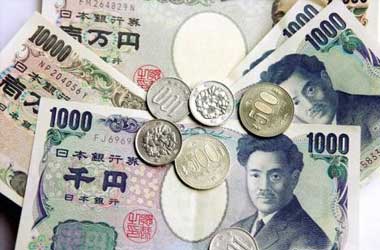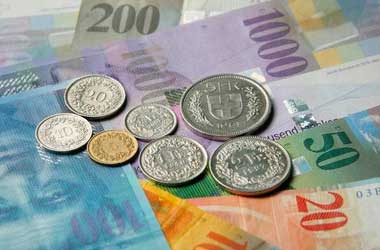 The Japanese yen maintained steady and ended at 113.65 per US dollar on Friday, benefiting from a broad unwinding of long bets in risk currencies after the Bank of England’s unexpected decision to maintain interest rates at current levels. The yen gained ground against a number of currencies, including the British pound, the Australian and New Zealand dollars, the Euro, and the Canadian dollar.
The Japanese yen maintained steady and ended at 113.65 per US dollar on Friday, benefiting from a broad unwinding of long bets in risk currencies after the Bank of England’s unexpected decision to maintain interest rates at current levels. The yen gained ground against a number of currencies, including the British pound, the Australian and New Zealand dollars, the Euro, and the Canadian dollar.
Furthermore, as the Bank of Japan (BOJ) restated its commitment to continuing loose monetary policies in order to attain its 2-percent price stability objective, the value of the Japanese yen remained around 3-year lows relative to the US dollar. Household expenditure in Japan fell by 1.9 percent year-on-year in real terms in September 2021, compared with market expectations of a 3.9 percent reduction and after a 3.0 percent decline in the previous month, according to the Bank of Japan.
This was the second consecutive month in which personal consumption declined, as a result of continued concern about the spread of coronavirus. Food spending continued to decline (-3.5 percent in August compared to -3.2 percent in July), clothing spending declined (-8.1 percent compared to -11.5 percent), transportation and communication spending declined (-6.5 percent compared to -3.4 percent), culture and recreation spending declined (-8.6 percent compared to -3.9 percent), fuel, light, and water charges decreased (-5.7 percent compared to -0.9 percent), and furniture and household goods expenditure decreased (-5.7 percent compared to -0.9 percent) (-15.8 percent vs -9 percent ).
Consumers increased their spending on housing (5.3 percent vs 5.9 percent) as a result of a steep increase in spending on medical care (9.4 percent versus -8.6 percent) and a significant increase in spending on education (5.3 percent versus 5.9 percent) (20.7 percent vs 3 percent ). Compared to the previous month, monthly household expenditure increased by 5 percent, the highest rate in five months and above expectations of 2.8 percent. This is an improvement from the previous month’s 3.9 percent decline in spending.
Compared to the previous month’s reading of 47.8, the au Jibun Bank Japan Services PMI climbed to 50.7 in October 2021, matching a flash high. Since January 2020, the service industry has seen growth, which has been aided by the lifting of COVID-19’s state of emergency in all areas by the end of September, since the number of new infections has been declining since that time.
Employees increased by a sliver of a percentage point, but new orders declined by the least amount since April and backlogs of work reduced at the slowest rate in three months. Furthermore, as additional nations in the Asia-Pacific region faced another wave of viral illnesses and rising shipping costs impacted on foreign sales, fresh export orders fell at an even quicker pace.
In terms of pricing, input prices have risen at the quickest rate since January 2020, owing to increasing raw material, gasoline, and labour expenses, among other factors. Meanwhile, the price of production rose to a level not seen in 21 months. The outlook has improved to its best level since March 2013, buoyed by expectations that the epidemic will be brought to an end. A revised higher result of 53.2 for the au Jibun Bank Japan Manufacturing PMI was reported in October 2021, up from a flash reading of 53.0 and a final reading of 51.5 a month earlier.
A decrease in COVID-19 instances and a loosening of limitations throughout the nation contributed to the ninth consecutive month of manufacturing activity growth, which was the fastest rate since April. After experiencing reductions in September, both production and new orders increased in October, while purchasing activity increased for the seventh time in eight months after experiencing a fall in September. Employment also increased in October, but at a somewhat quicker rate than in September.
In the meanwhile, export sales have declined somewhat as a result of new restrictions in several nations. Prices have increased as a result of continuous supply chain constraints and material shortages. Input cost inflation has escalated to its highest level since August 2008. Additionally, production cost inflation increased at the fastest rate in more than 13 years. Finally, business confidence rose to its greatest level since the series started in July 2012, according to the data.




